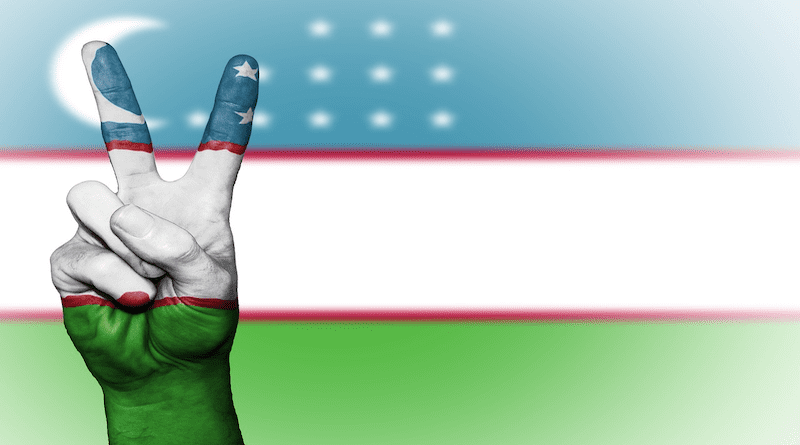Uzbekistan: Police Abuses In Autonomous Region Protests, Reports HRW
Uzbek security forces unjustifiably used lethal force and other excessive responses to disperse mainly peaceful demonstrators on July 1 and 2, 2022 in Karakalpakstan, Uzbekistan’s autonomous region, Human Rights Watch said Monday.
Security forces’ responses included the inappropriate use of small arms and various types of grenades, weapons that can cause severe injuries and death when used recklessly. At least 21 people died, including 4 law enforcement officers, and over 270 were injured. Uzbekistan should set an independent investigation into these events, including into the conduct of the security forces. It should also urgently review the use of certain categories of grenades used by Uzbek law enforcement in crowd control settings.
“Many people were killed and hundreds were injured – some with the most horrific injuries – in Karakalpakstan in July,” said Hugh Williamson, Europe and Central Asia director at Human Rights Watch. “Uzbekistan owes it to the victims to properly investigate how this happened and to hold accountable those responsible for serious violations.”
On July 15, parliament created a commission to investigate the events in Karakalpakstan in July. The 14-member commission includes officials, senators, representatives of civil society and experts, and is headed by the Uzbek human rights ombudswoman, Feruza Eshmatova. But it has neither issued a final report nor indicated when it plans to.
Human Rights Watch verified 55 videos of the protests and analyzed an additional 31 videos and 30 photographs of dead and wounded protesters and of weapons used that were recorded by participants or witnesses to the events in Nukus, the regional capital, and surrounding areas and uploaded to social media platforms between July 1 and August 1.
Through an independent medical analysis of the visual evidence, Human Rights Watch identified seven cases in which people sustained, and probably died from, severe tissue damage that was highly consistent with trauma caused by explosives.
Human Rights Watch verified two videos shot near the Tashkent Hotel in Nukus and uploaded to Twitter on August 1 that show protesters with severe injuries, such as skin lacerations and gaping flesh wounds, consistent with damage caused by explosives through the use of various types of grenades. These grenades, known variously as flash/bang, concussion, sound bombs, or stun grenades, are thrown by hand or projected by launchers. The grenades detonated in close proximity to crowds. In some cases, grenades also detonated when they hit protesters.
Human Rights Watch identified two other incidents, in Kanlykul, 65 kilometers northwest of Nukus, and near the monument to the Karakalpak Poet Berdakh in central Nukus, in which protesters experienced explosive trauma when security forces used projected flash/bangs and sound charges to disperse protesters.
Separately, Human Rights Watch identified two types of significantly heavier projected grenades, some of which are manufactured by Arsenal AD of Bulgaria, used during the protests that can cause significant injury or death. These grenades weigh 250-280 grams each, compared with 25-50 for standard grenades. The combination of velocity and mass means such grenades can deliver highly destructive and potentially fatal blows if they directly hit protesters at relatively short ranges. Human Rights Watch found evidence that at least one protester may have been killed by one of these heavier grenades.
Human Rights Watch also analysed a video of an injured protester with a wound that appears highly consistent with a gunshot injury.
Uzbekistan has an obligation to respect the rights to peaceful expression and assembly, including by ensuring that its security forces are trained and equipped to police demonstrations in rights-respecting ways. The inappropriate use of small arms and grenades violates several of Uzbekistan’s international human rights obligations.
The United Nations Basic Principles on the Use of Force and Firearms by Law Enforcement Officials state that security forces should “apply non-violent means before resorting to the use of force and firearms,” and always use the minimum necessary force. Intentional, lethal use of firearms is only permitted when strictly unavoidable to protect life.
The Uzbekistan authorities should urgently review the way security forces use hand-thrown and projected grenades for civil unrest and crowd control with a view to minimize future loss of life. Uzbekistan should withdraw such grenades from the Uzbek police arsenal to avoid any such deaths and severe injuries happening at future protests.
The United Kingdom, the United States, and the European Union have called for an independent investigation into events in the region. On July 5, the then-UN High Commissioner for Human Rights Michelle Bachelet called “for a prompt, independent and transparent investigation.”
The commission established under the Office of the Ombudsman is an important step by the authorities, especially the involvement of civil society representatives. However, there is no evidence it is investigating the deaths and severe injuries that occurred or the actions taken by the security forces, including the weapons they used. These issues are central to an independent investigation focused on accountability for the human rights violations that occurred.
Uzbek authorities should also investigate any reports of torture and mistreatment of detainees following the protests and bring those responsible to justice.
Uzbekistan’s international partners should reinforce the call for an independent investigation into human rights violations committed in Karakalpakstan and press the government to review the use of grenades deployed in crowd control. Uzbekistan’s partners, especially the EU and US, should calibrate relations with Uzbekistan based on measurable progress on these issues.
“The government’s response to the July events is a test of whether Uzbekistan has turned a page and truly intends to respect human rights and rule of law,” Williamson said. “It should not shy away from bringing to account security force personnel responsible for the deaths and injuries of so many people.”

